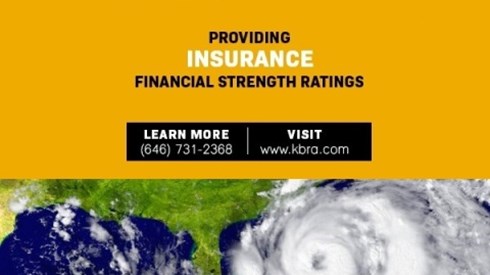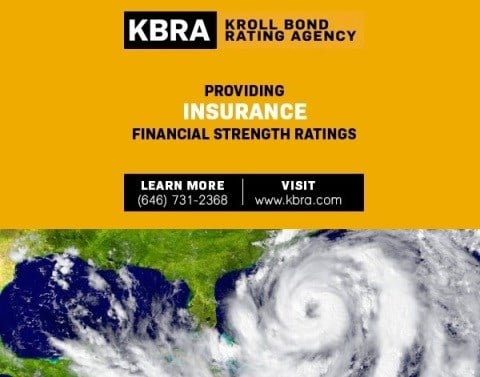KBRA: Atlantic Hurricane Season Ends, Devastation Continues

December 05, 2017

Kroll Bond Rating Agency (KBRA) has released a research report titled 2017 Atlantic Hurricane Season Ends; Widespread Devastation Across Multiple Sectors Continues. The research findings include the following.
- Although this year's named storms and hurricanes far exceeded historical averages, KBRA believes the vast majority of property and casualty insurers possess current capital positions sufficient to withstand these events.
- KBRA is cautious with respect to adverse reserve development and material increases in reinsurance pricing. To date, less than $50 billion in losses have been reported by direct writers, reinsurers, and alternative capital providers.
- Upward revisions of losses may raise concerns regarding companies' current reinsurance programs as well as whether future coverage will be affordable for catastrophe-exposed insurers.
- It is widely accepted that reinsurance pricing will increase, but to what degree remains up for debate. KBRA believes alternative capital is also likely to be affected.
Not only was the 2017 Atlantic hurricane season the costliest ever, but 2017 will likely have the highest insured catastrophe losses in US history. Insured losses from Hurricanes Harvey, Irma, and Maria alone are likely to be approximately $100 billion. Industry loss estimates from several modeling firms range from $70 billion to $125 billion. Of this, $12–$25 billion is expected to be covered by the alternative capital markets.
Soft markets in reinsurance can mean softer pricing and a loosening of terms and conditions; the same can occur in alternative capital as evidenced by lower expected returns in recent years and with structural features such as choice of trigger. If history is our guide, the recent hurricane losses will lead to a surge in alternative capital.
In addition to the soft market for reinsurance, Florida-based insurers have also benefited from the recent strengthening of the Florida Hurricane Catastrophe Fund (FHCF), which could help stabilize pricing for 2018. If there are substantial increases in reinsurance pricing, Florida insurers may be able to increase their FHCF coverage.
Based on accumulated cyclone energy, September 2017 was the strongest hurricane month ever recorded. September 2017 also set the monthly record for major hurricane days. Interestingly, all 10 hurricanes in 2017 occurred in a row, which is the greatest number of consecutive hurricanes in decades. It is also interesting to note that there were two of every category of hurricane during the 2017 season.
In a separate report, KBRA noted that the first reported credit risk transfer delinquencies from storms may rise 35–40 percent. KBRA's delinquency estimate is supported by subsequent research from the Federal Reserve Economic Data and the Mortgage Bankers Association (MBA).
Additionally, KBRA analyzed data from the MBA and the National Oceanic and Atmospheric Administration dating back to Hurricane Andrew in 1992 to see if a correlation existed between major catastrophic events and quarterly mortgage originations; however, results were inconclusive.
KBRA will closely monitor loss development, reinsurance pricing, and the availability of reinsurance and alternative capital. In addition, capital concerns for several Florida-only companies may lead to an increase in policies going back to Florida Citizens, the state's insurer of last resort.
December 05, 2017
